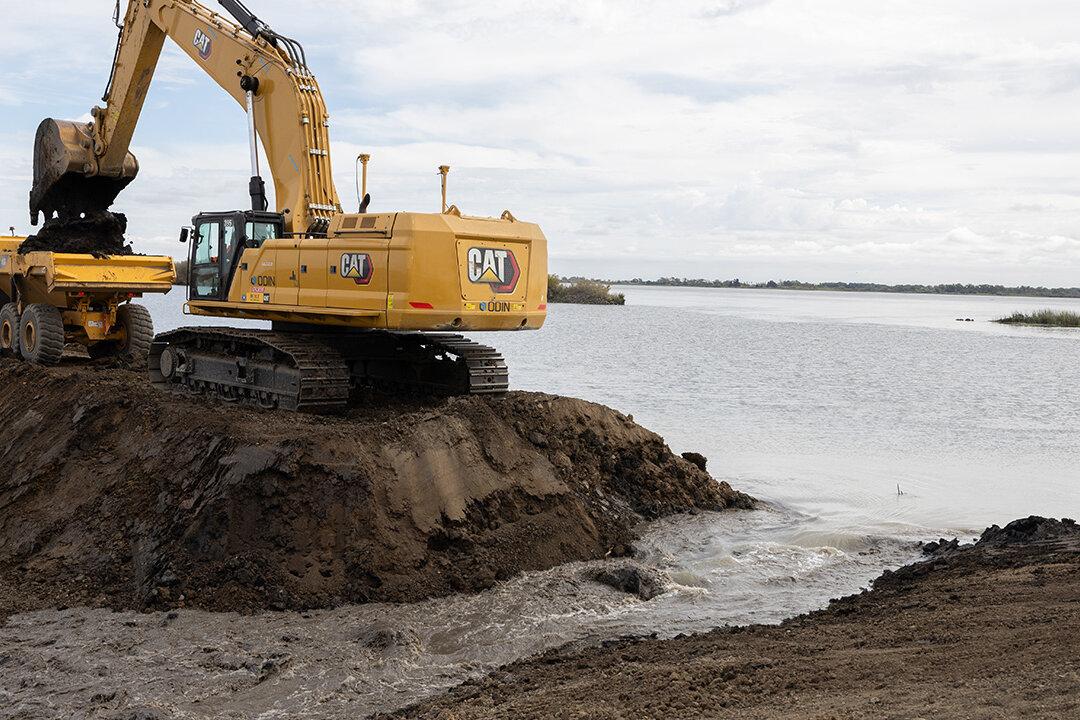California is breaching a large-scale levee near Sacramento for the first time in 100 years to restore wildlife habitat and provide new flood capacity.
The Department of Water Resources and Ecosystem Investment Partners held a levee breaching ceremony on Sept. 18 to celebrate completing the Lookout Slough Tidal Habitat Restoration and Flood Improvement Project. Nine places on the levee will be breached to create an open-water habitat in the Sacramento-San Joaquin Delta.





